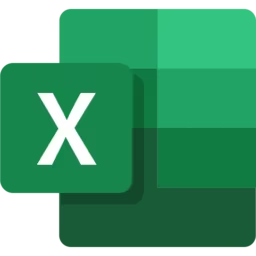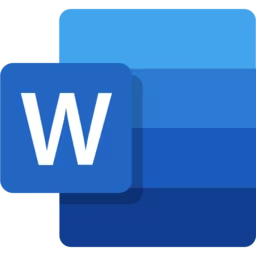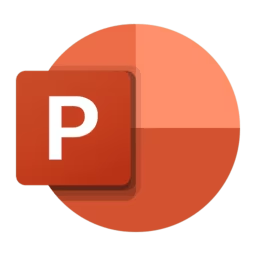Spring Boot 与 Rest API、MVC 和微服务
发布时间:2024年5月
视频格式:MP4 | 视频:h264, 1280×720 | 音频:AAC, 44.1 KHz, 2 Ch
语言:英语 | 时长:20小时31分钟 | 文件大小:12.3 GB
Spring Boot、Rest API、Hibernate/JPA、Lombok、Spring Security、Spring MVC、Thymeleaf 和微服务(使用1.25倍速播放)
你将学到什么:
了解 Spring Boot 基础:深入理解 Spring Boot 框架的核心概念和功能。
构建 RESTful API:学习如何使用 SpringBoot 和 Spring MVC 设计和实现 RESTful API。了解处理 HTTP 请求的最佳实践。
开发 MVC 网页应用:学习如何使用 Spring Boot 和 Spring MVC 构建 MVC(模型-视图-控制器)网页应用。
实施微服务架构:了解微服务架构及其优势和挑战。
需求:
Java 编程语言:精通 Java 编程是必需的,包括对面向对象编程概念、数据结构和基本语法的了解。
Spring 框架基础:(可选)了解 Spring 框架的核心概念是有益的,包括依赖注入、控制反转(IoC)和面向切面编程(AOP)。
网页开发基础:了解网页开发基础,包括 HTTP 协议、HTML、CSS 和 JavaScript。
数据库基础:对关系数据库概念、SQL 查询和数据库设计有基本的了解。
描述:
该课程旨在帮助 Java 初学者从基础开始学习 Spring Boot。
该课程设计并教授的方式让初学者能够轻松掌握并编码自己的 Spring Boot 应用程序,努力迷你动画化。
Spring Boot 是一个强大的框架,用于构建基于 Java 的应用程序,为应用程序开发提供了一种流线型和固执己见的方法。结合 Spring 的广泛生态系统,它提供了一套全面的解决方案,用于构建包括 RESTful API、MVC 网页应用和微服务架构在内的各种应用程序。
使用 Spring Boot 开发 REST API:Spring Boot 简化了 RESTful API 的创建,提供了对各种功能的内置支持,如:
注解驱动的编程模型:开发者可以使用注解,如 @RestController、@RequestMapping 和 @GetMapping 来定义 REST 端点和处理 HTTP 请求。
自动 JSON 序列化/反序列化:Spring Boot 使用像 Jackson 这样的库自动将 Java 对象转换为 JSON,反之亦然。
内置服务器:Spring Boot 包括一个内置的 servlet 容器(例如 Tomcat、Jetty),因此你可以将你的 REST API 作为独立应用运行。
操作端点:Spring Boot Actuator 提供了内置端点,用于监控和管理你的应用,使监控 REST API 的健康、度量和其他运行时信息变得简单。
使用 Spring Boot 开发 MVC 网页应用:Spring Boot 简化了 MVC(模型-视图-控制器)网页应用的开发,提供了诸如:
Spring MVC 框架:Spring Boot 与 Spring MVC 集成,提供了一个强大的网页框架,用于构建网页应用。
约定优于配置:Spring Boot 采用合理的默认设置和自动配置,减少了手动配置的需求。
Thymeleaf、FreeMarker 或其他模板引擎:Spring Boot
Spring Boot with Rest API, MVC and MicroservicesSpring Boot with Rest API, MVC and Microservices

Published 5/2024
MP4 | Video: h264, 1280×720 | Audio: AAC, 44.1 KHz, 2 Ch
Language: English | Duration: 20h 31m | Size: 12.3 GB
Spring Boot, Rest API, Hibernate/JPA, Lombok, Spring Security, Spring MVC, Thymeleaf and Microservices (Use 1.25x speed)
What you’ll learn
Understanding Spring Boot Fundamentals: Gain a solid understanding of the core concepts and features of the Spring Boot framework.
Building RESTful APIs: Learn how to design and implement RESTful APIs using SpringBoot and Spring MVC. Understand best practices for handling HTTP requests, r
Developing MVC Web Applications: Learn how to build MVC (Model-View-Controller) web applications using Spring Boot and Spring MVC.
Implementing Microservices Architectures: Gain an understanding of microservices architecture and its benefits and challenges
Requirements
Java Programming Language: Proficiency in Java programming is essential, including knowledge of object-oriented programming concepts, data structures, and basic syntax. Spring Framework Basics: (optional) Familiarity with the core concepts of the Spring Framework is beneficial, including dependency injection, inversion of control (IoC), and aspect-oriented programming (AOP)
Web Development Fundamentals: Understanding of web development fundamentals, including HTTP protocol, HTML, CSS, and JavaScript. Database Fundamentals: Basic understanding of relational database concepts, SQL queries, and database design.
Description
The course is designed for Java beginners keen to learn Spring Boot from Basics.
It is designed and taught in such a way that beginners can easily grasp and code their own Spring Boot applications with minimal effort.
Spring Boot is a powerful framework for building Java-based applications, providing developers with a streamlined and opinionated approach to application development. Combined with Spring’s extensive ecosystem, it offers a comprehensive solution for building a wide range of applications, including RESTful APIs, MVC web applications, and microservices architectures.
REST API Development with Spring Boot: Spring Boot simplifies the creation of RESTful APIs by providing built-in support for various features such as
Annotation-driven programming model: Developers can use annotations like @RestController, @RequestMapping, and @GetMapping to define REST endpoints and handle HTTP requests.
Automatic JSON serialization/deserialization: Spring Boot automatically converts Java objects to JSON and vice versa using libraries like Jackson.
Embedded server: Spring Boot includes an embedded servlet container (e.g., Tomcat, Jetty) so that you can run your REST API as a standalone application.
Actuator endpoints: Spring Boot Actuator provides built-in endpoints for monitoring and managing your application, making it easy to monitor health, metrics, and other runtime information of your REST API.
MVC Web Application Development with Spring Boot: Spring Boot simplifies the development of MVC (Model-View-Controller) web applications by providing features such as
Spring MVC framework: Spring Boot integrates with Spring MVC to provide a robust web framework for building web applications.
Convention over configuration: Spring Boot adopts sensible defaults and auto-configuration, reducing the need for manual configuration.
Thymeleaf, FreeMarker, or other template engines: Spring Boot supports various view technologies for rendering HTML templates in MVC web applications.
Static content handling: Spring Boot can serve static content (e.g., HTML, CSS, JavaScript) from the classpath or external locations.
Embedded web server: Similar to REST API development, Spring Boot includes an embedded servlet container for running MVC web applications as standalone applications.
Microservices Architecture with Spring Boot: Spring Boot is well-suited for building microservices-based architectures due to its lightweight nature and extensive support for distributed systems. Some key features for building microservices with Spring Boot include
Spring Cloud: Spring Boot integrates with Spring Cloud to provide features like service discovery (e.g., Netflix Eureka), client-side load balancing (e.g., Ribbon), distributed configuration (e.g., Spring Cloud Config), and circuit breakers (e.g., Netflix Hystrix).
Externalized configuration: Spring Boot enables configuration to be externalized, making it easy to configure microservices independently of each other.
Containerization and orchestration: Spring Boot applications can be easily containerized using technologies like Docker and orchestrated with platforms like Kubernetes or Docker Swarm.
Resilience and fault tolerance: Spring Boot integrates with libraries like Netflix Hystrix to implement resilient microservices that can handle failures gracefully.
Overall, Spring Boot provides a comprehensive platform for building RESTful APIs, MVC web applications, and microservices architectures, offering developers a productive and efficient way to develop modern Java-based applications.
This course is a one-stop solution for all the Spring Boot technologies.
Who this course is for
All the Java aspirants who would like to see their career as the following: Java Developer: Design, develop, and maintain Java-based applications for industries. Backend Developer: Build robust backend systems using Java, JDBC, Spring Boot, and Restful services. Full-stack Developer: Combine Java expertise with frontend technologies for end-to-end application development. Software Engineer: Utilize Java skills in software engineering roles, ensuring quality and efficiency in software development.

扫码免费下载














